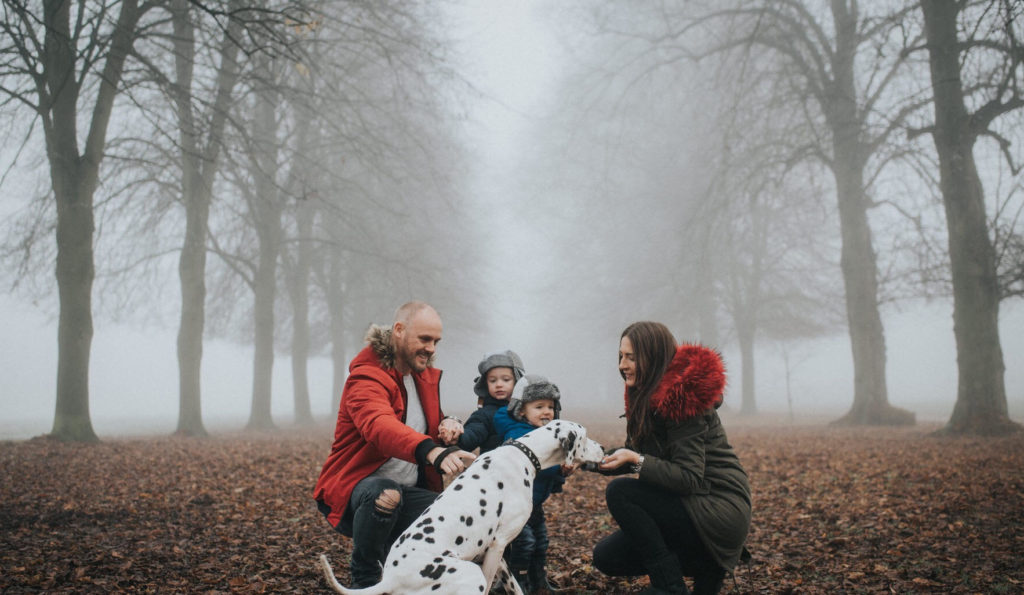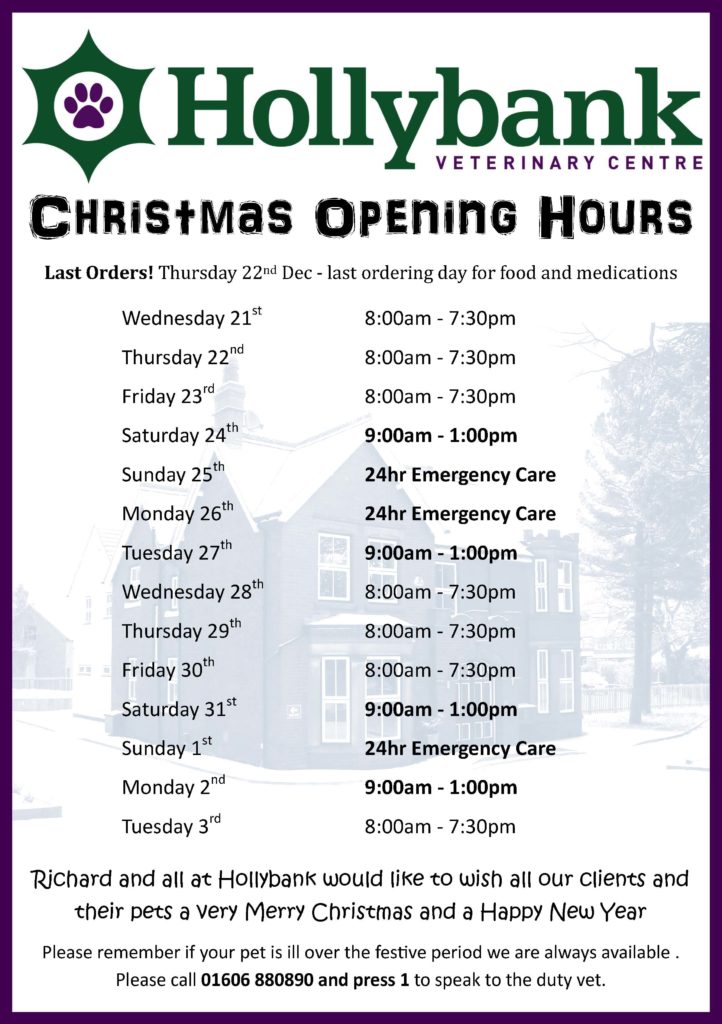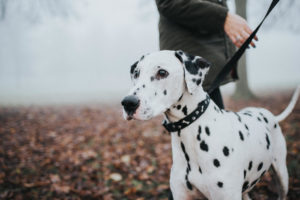 Cooper is a beautiful Dalmation who presented to us out of hours due to sudden bloating of the abdomen and signs of discomfort. He had eaten his own dinner that evening but had not long stolen some of the family’s spaghetti too!
Cooper is a beautiful Dalmation who presented to us out of hours due to sudden bloating of the abdomen and signs of discomfort. He had eaten his own dinner that evening but had not long stolen some of the family’s spaghetti too!
Prior to that he had been absolutely normal. Of course, Cooper’s signs could have just been gastrointestinal upset with eating something different. However, with a bloated abdomen, there were other more concerning differential diagnoses we wanted to rule in or out for him so we organised to see him that evening.
On arrival, Cooper was quiet and lethargic. His owner reported that his demeanour had deteriorated further since phoning us and he had suddenly become very weak and wobbly on all four feet. Cooper had pale mucous membranes and weak pulses on examination, his abdomen was very bloated and painful to palpate too. At this point our exam pointed towards twisting of the stomach, also known as a stomach torsion.
What is a stomach torsion?
Stomach torsion is a surgical emergency and can have very serious consequences if left untreated. There are many suggestions and theories as to why this can happen but breed, body conformation and eating routine are thought to play a role. The stomach becomes severely full of gas and can twist on itself causing the gas to become trapped. It is also described as gastric dilation and volvulus (GDV). The condition in itself is very painful and can progress very quickly as shown by Cooper’s presentation.
The condition can result in other secondary life threatening changes:
- The large gas filled stomach prevents return of blood back to the heart. This results in circulatory compromise and poor blood pressure. This explains why Cooper had weak pulses, pale gums and was lethargic on arrival.
- The constant pressure of gas in the stomach can then result in damage to the stomach wall. The extent and length of this pressure can ultimately cause parts of the wall to die off.
- The spleen is connected closely to the stomach by important vessels. Twisting of the stomach can compromise the spleen’s blood supply resulting in irreversible damage to the splenic tissue.
So what happens next?
 Animals with GDV can present in critical condition and must first be stabilised with high rates of intravenous fluid therapy. This helps to normalise blood pressure and return of blood to the heart. It is very important to do this prior to the anaesthetic. The stomach then requires decompression of gas and untwisting which requires surgery.
Animals with GDV can present in critical condition and must first be stabilised with high rates of intravenous fluid therapy. This helps to normalise blood pressure and return of blood to the heart. It is very important to do this prior to the anaesthetic. The stomach then requires decompression of gas and untwisting which requires surgery.
In making the decision to perform surgery we have to consider the surgical and post surgical risks involved. Although we stabilise our patients there is still an ongoing disturbance to the circulatory system and the anaesthetic itself is not without its risks. During surgery the changes that have occurred may be too severe to correct and in others large portions of stomach wall or spleen may need to be removed. If such intervention is needed then surgical wounds performed on compromised tissues can be at high risk of wound breakdown.
We then have to go on to consider how appropriate emergency surgery is for that individual patient. For example, if that patient has other conditions affecting their quality of life or factors that may impair recovery from a potentially serious surgery. In these cases, we have to make the difficult decision to put our pet to sleep. This is always an extremely difficult decision to make. Fortunately for Cooper, he had been a bright happy boy before this and we decided to perform surgery.
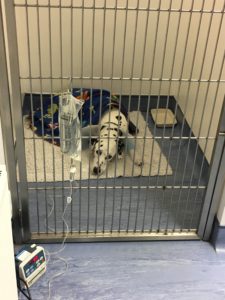 Whilst Cooper was anaesthetised a nurse passed a tube down his oesophagus and the surgeon then helped to guide the tube into his stomach to pass the air. The stomach deflated slightly but due to food accumulation in his stomach it did not decompress as well as we had hoped. The stomach and spleen were assessed carefully for secondary changes. Cooper’s stomach was very bruised and inflamed and his spleen was congested with blood but these changes were not severe and would hopefully be reversible. We elected to make a small incision into his stomach to aid full decompression which then allowed us to re-position the stomach.
Whilst Cooper was anaesthetised a nurse passed a tube down his oesophagus and the surgeon then helped to guide the tube into his stomach to pass the air. The stomach deflated slightly but due to food accumulation in his stomach it did not decompress as well as we had hoped. The stomach and spleen were assessed carefully for secondary changes. Cooper’s stomach was very bruised and inflamed and his spleen was congested with blood but these changes were not severe and would hopefully be reversible. We elected to make a small incision into his stomach to aid full decompression which then allowed us to re-position the stomach.
Having now had one episode of GDV Cooper could be at risk for another. Therefore, we perform a procedure which attaches the stomach to the abdominal wall, this is known as a ‘gastropexy’. This will prevent the stomach from twisting on itself again. Overall Coopers surgery had been a success and we were really pleased at this stage in his treatment.
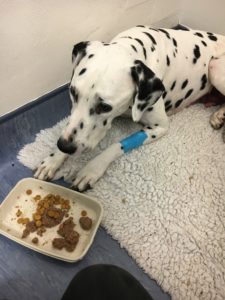 Cooper would still require lots of supportive care and TLC following his surgery. He remained on a drip and was monitored carefully. He was also given gastro-protectants given the likely damage to his stomach lining. He recovered really well over the next 48 hours and when he started eating with us we decided it was time for Cooper to go home. He would need to continue his gastro-protectants and sensitive food for a while but we knew he would be much happier back at home with his family.
Cooper would still require lots of supportive care and TLC following his surgery. He remained on a drip and was monitored carefully. He was also given gastro-protectants given the likely damage to his stomach lining. He recovered really well over the next 48 hours and when he started eating with us we decided it was time for Cooper to go home. He would need to continue his gastro-protectants and sensitive food for a while but we knew he would be much happier back at home with his family.
Cooper made a complete recovery and is doing really well. He continues to be a bright and happy boy and it is lovely to see him looking so well with his family. I am also told that he is back to his normal food loving self!

